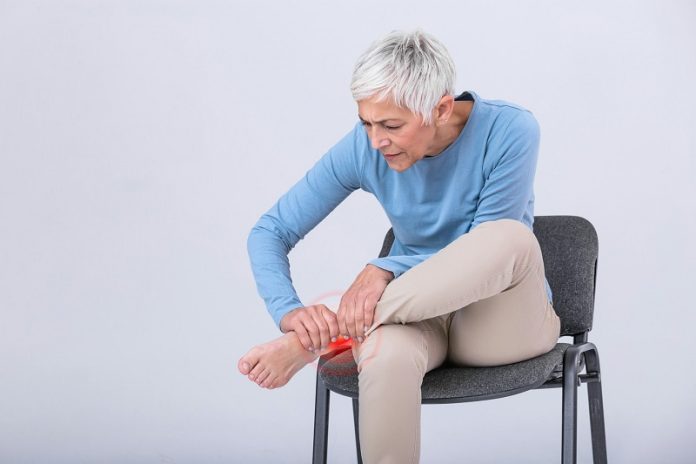
Gout is a very painful condition that affects many people around the world. It is a type of arthritis that happens when the body has too much uric acid.
This extra acid forms tiny, sharp crystals that get stuck in the joints. These crystals cause swelling, redness, and strong pain.
Gout often starts in the foot, especially in the big toe, but it can affect other joints too. If gout is not treated, it can lead to lasting joint damage and make it hard to move.
Doctors have long thought that gout is mostly caused by high levels of uric acid in the blood, a condition called hyperuricemia. But many people with high uric acid never get gout. In fact, four times more people have high uric acid without symptoms than those who develop gout. This has confused scientists for many years.
Now, researchers at the University of California San Diego and other institutions have found something new. They discovered that a protein called lubricin may play a key role in who gets gout. Lubricin is found in joint fluid and helps the joints move smoothly.
In their study, they looked at a rare case of a woman who had serious gout in her joints but did not have high uric acid levels in her blood. This unusual case helped them find a new clue. They found that her joints had very low levels of lubricin.
Lubricin is important because it protects the joints and helps them move easily. It also controls immune cells that cause inflammation. The researchers found that lubricin helps stop uric acid from turning into crystals inside the joints.
It also helps manage an enzyme called xanthine oxidase, which makes uric acid. If there isn’t enough lubricin, more uric acid is made, and crystals are more likely to form.
To see if this problem was common, the scientists also tested people with regular gout. They found that those people also had low levels of lubricin in their joint fluid.
This suggests that some people may be more likely to get gout because of their genes. Changes in the genes that affect lubricin production might explain why some people get gout even if their uric acid levels are not very high.
These new findings offer hope for better ways to treat gout. Right now, most treatments try to lower uric acid in the blood. But in the future, doctors might also try to raise lubricin levels in the joints. This could help stop crystals from forming and reduce pain.
The study was led by Dr. Robert Terkeltaub and his team and published in the journal Arthritis & Rheumatology. It gives scientists a new way to think about gout and may lead to new treatments for people suffering from this painful condition.
If you care about pain, please read studies about vitamin K deficiency linked to hip fractures in old people, and these vitamins could help reduce bone fracture risk.
For more information about wellness, please see recent studies that Krill oil could improve muscle health in older people, and eating yogurt linked to lower frailty in older people.
Copyright © 2025 Knowridge Science Report. All rights reserved.



